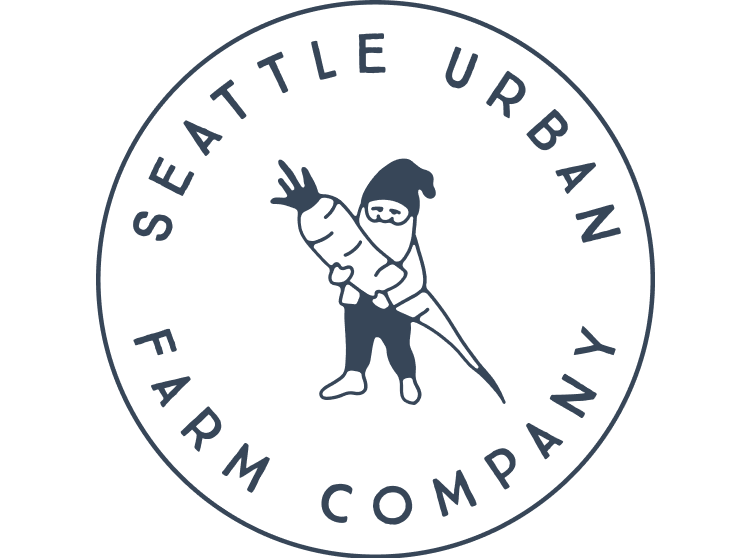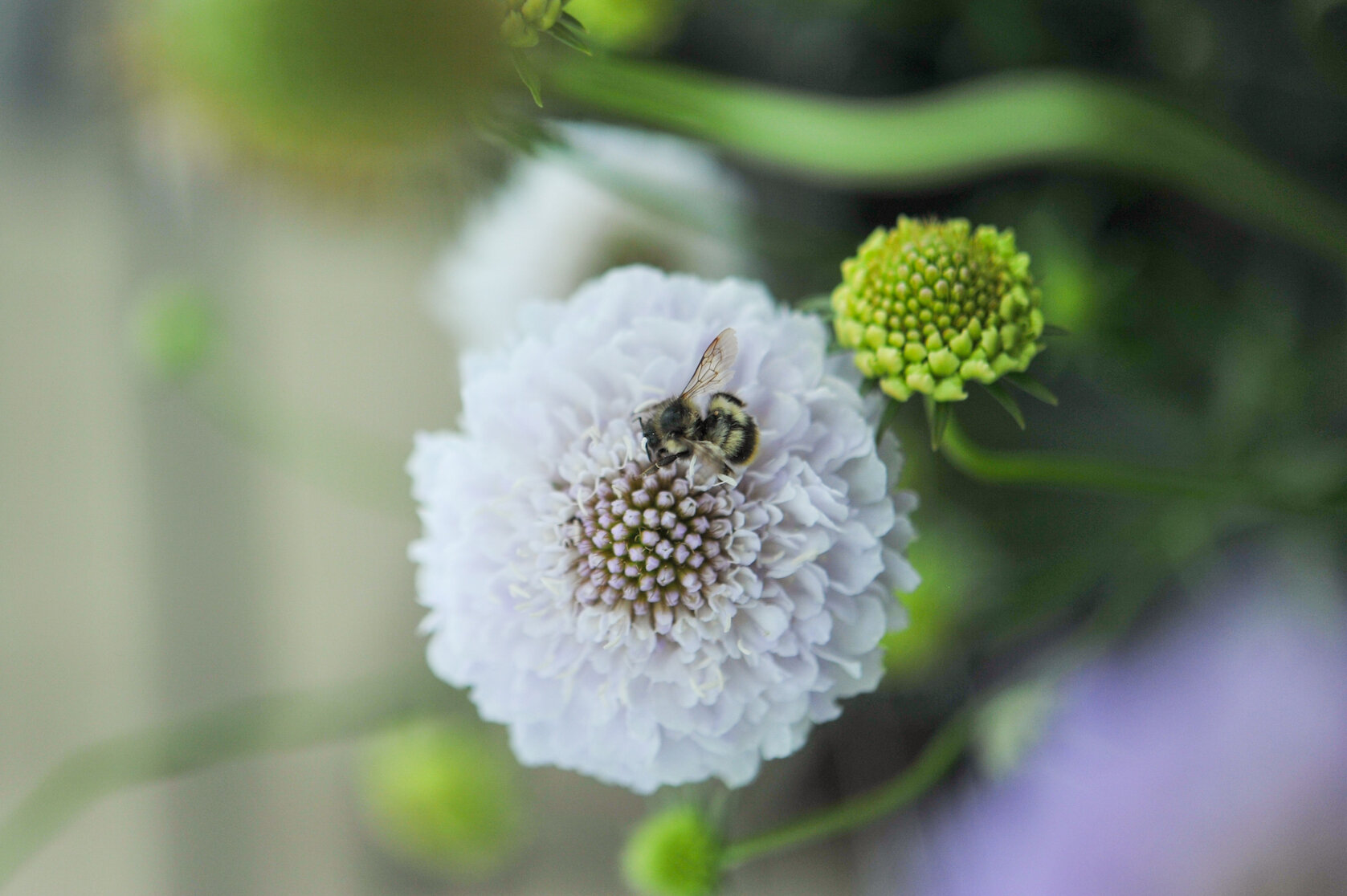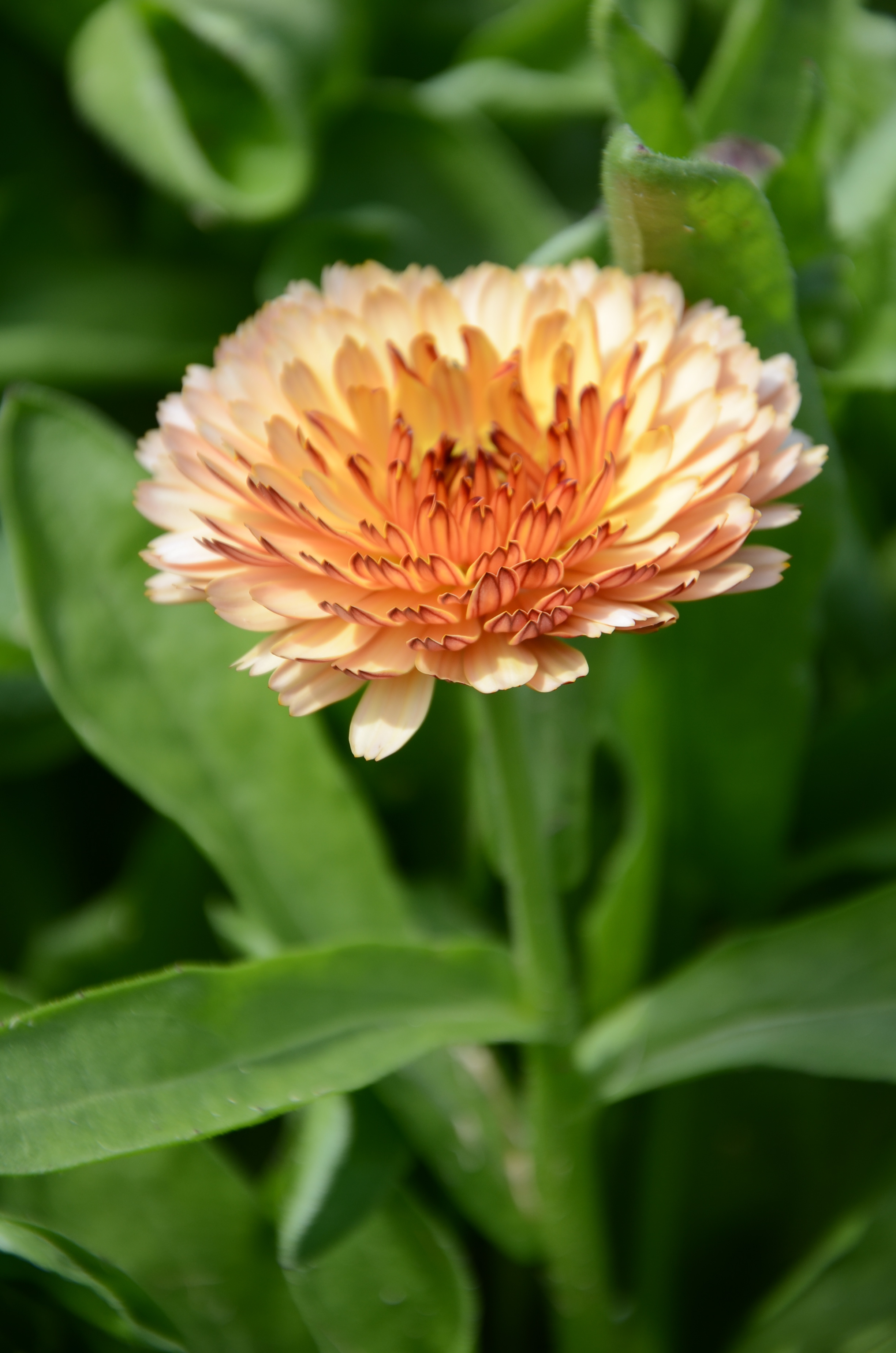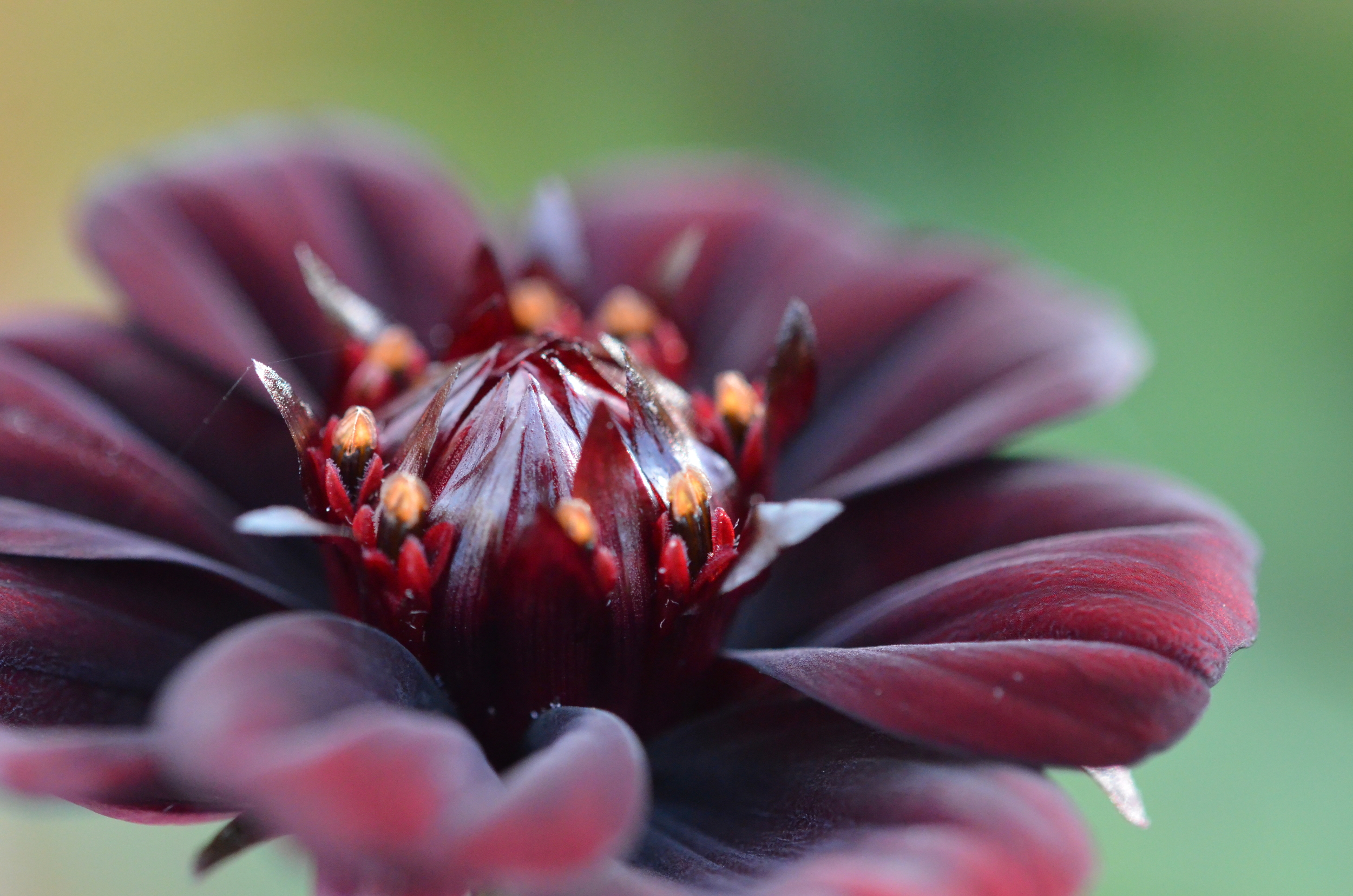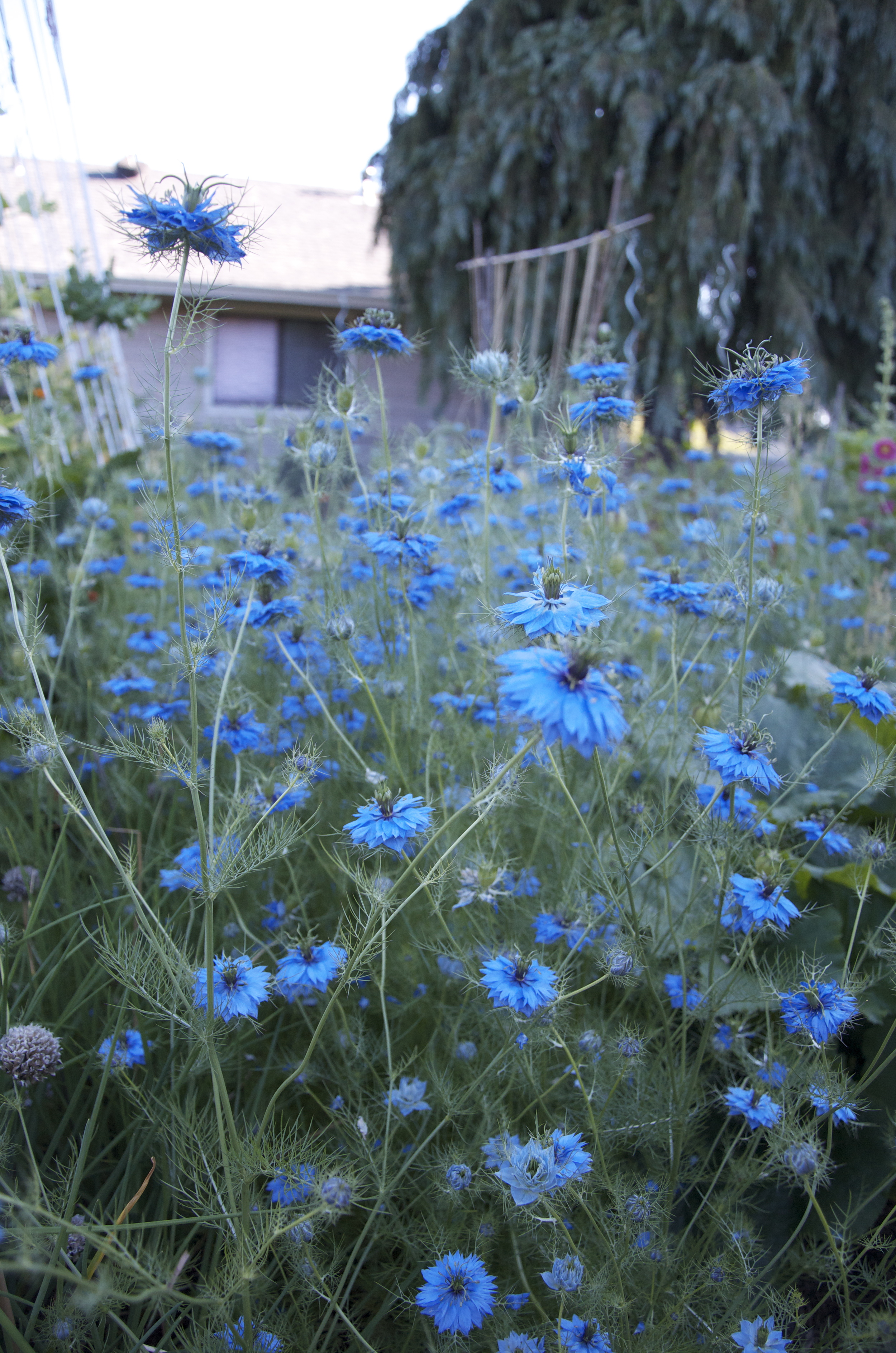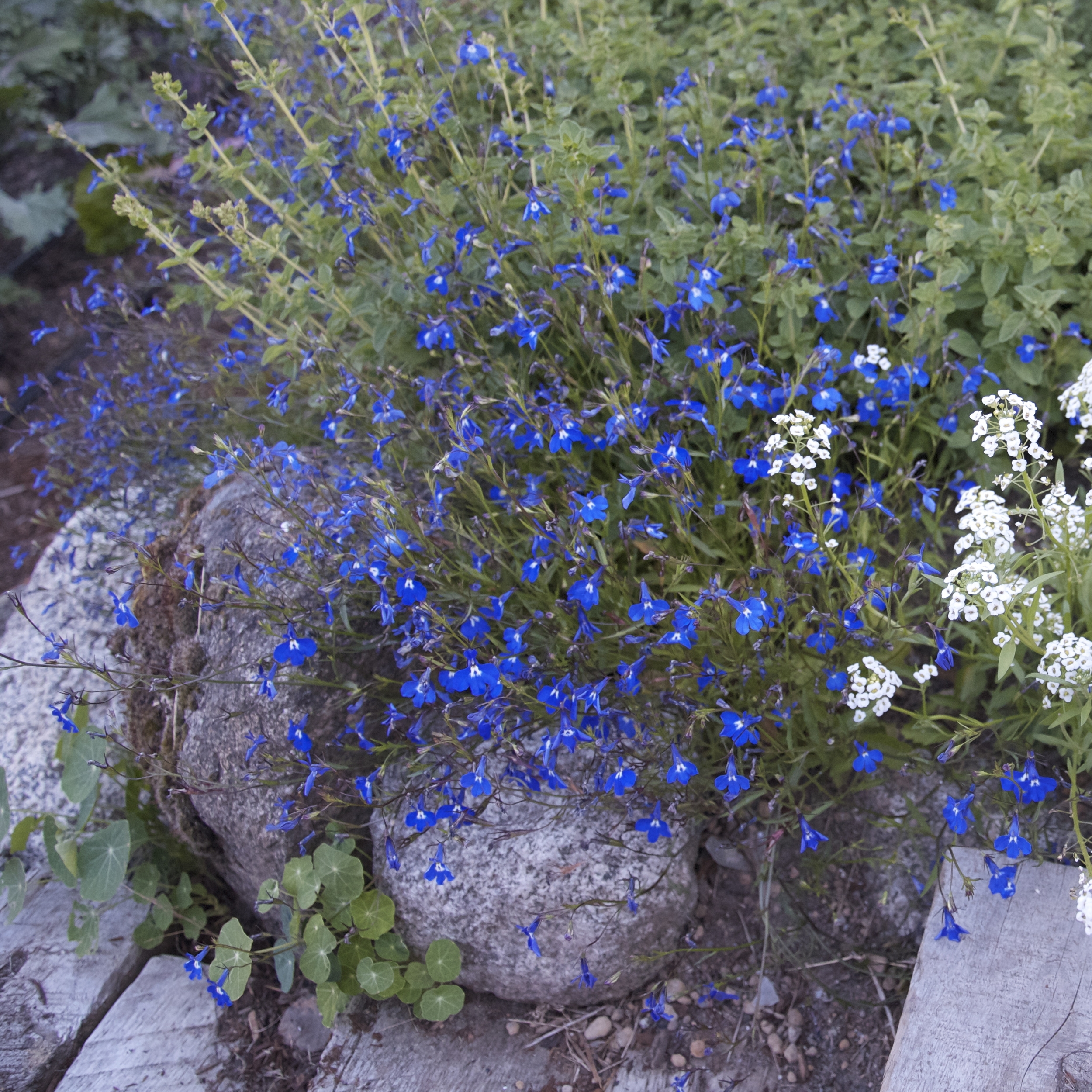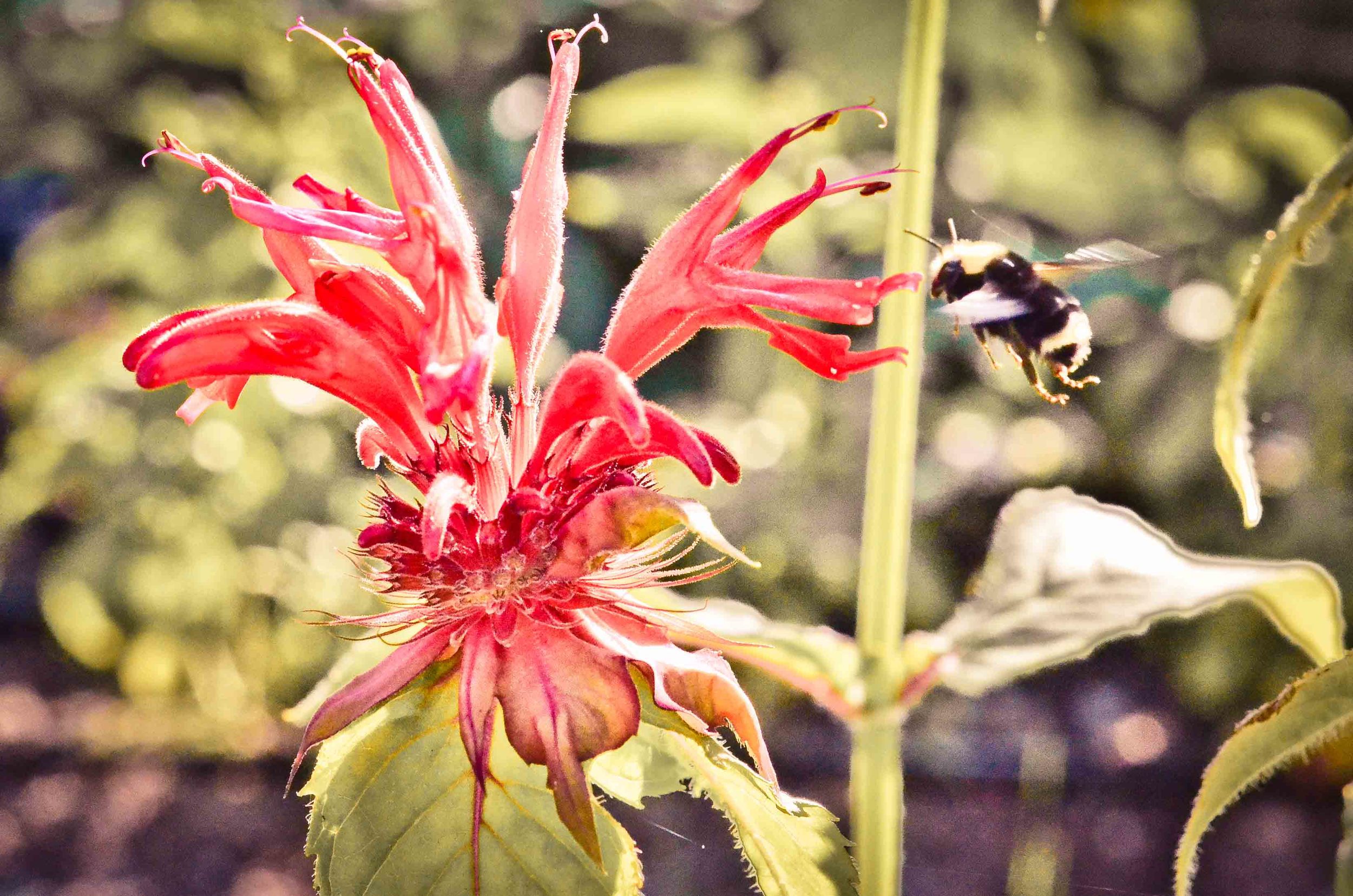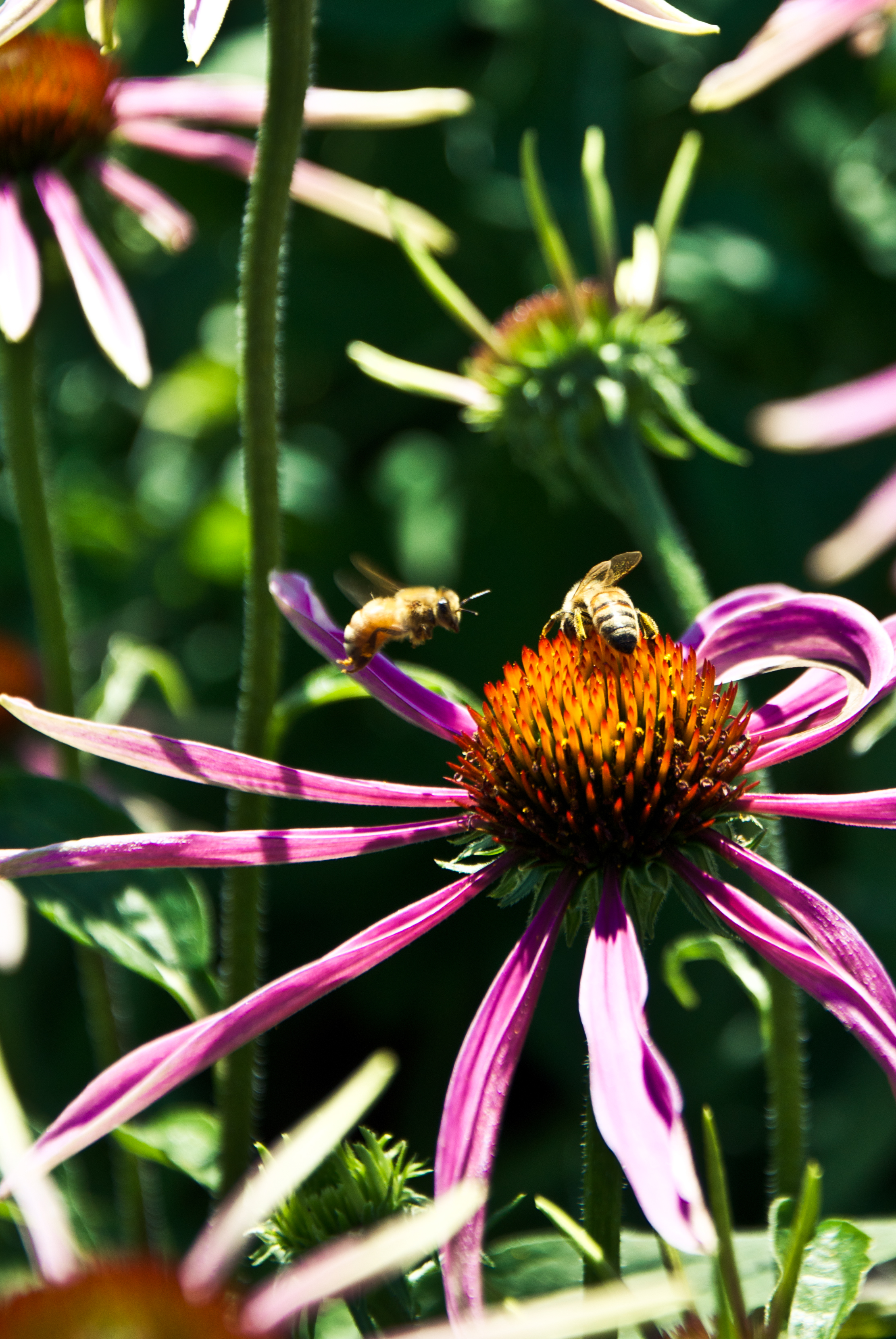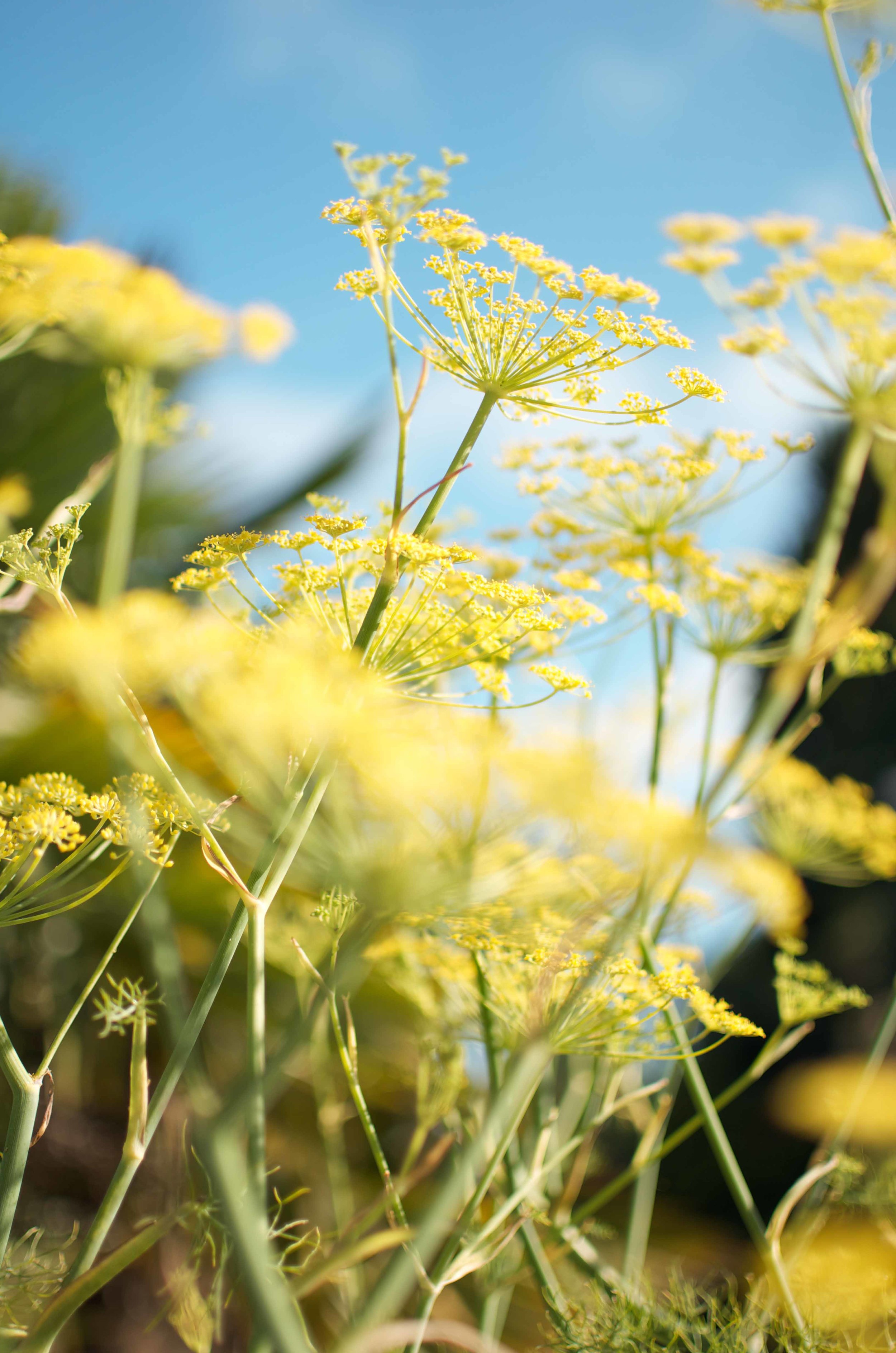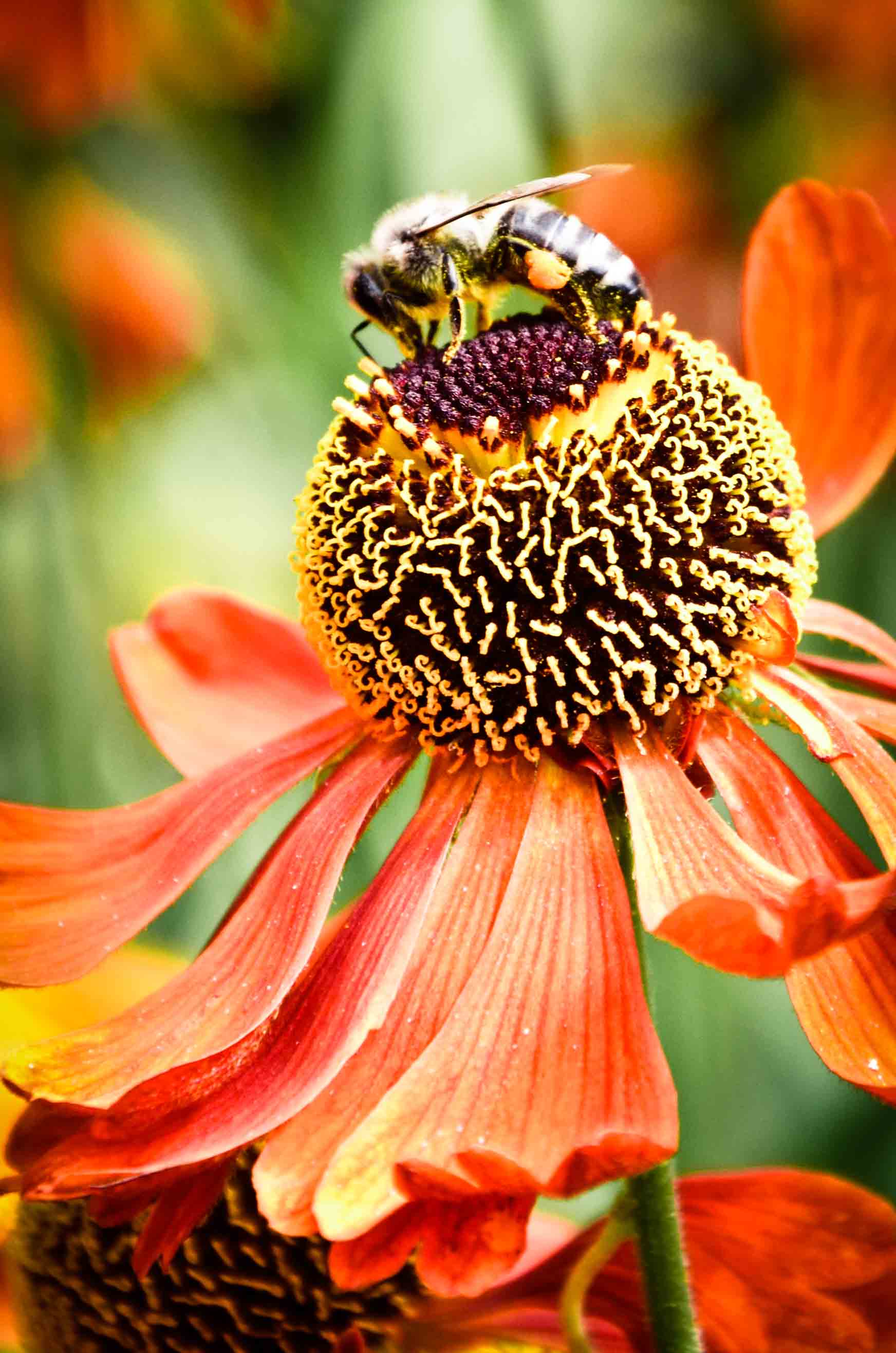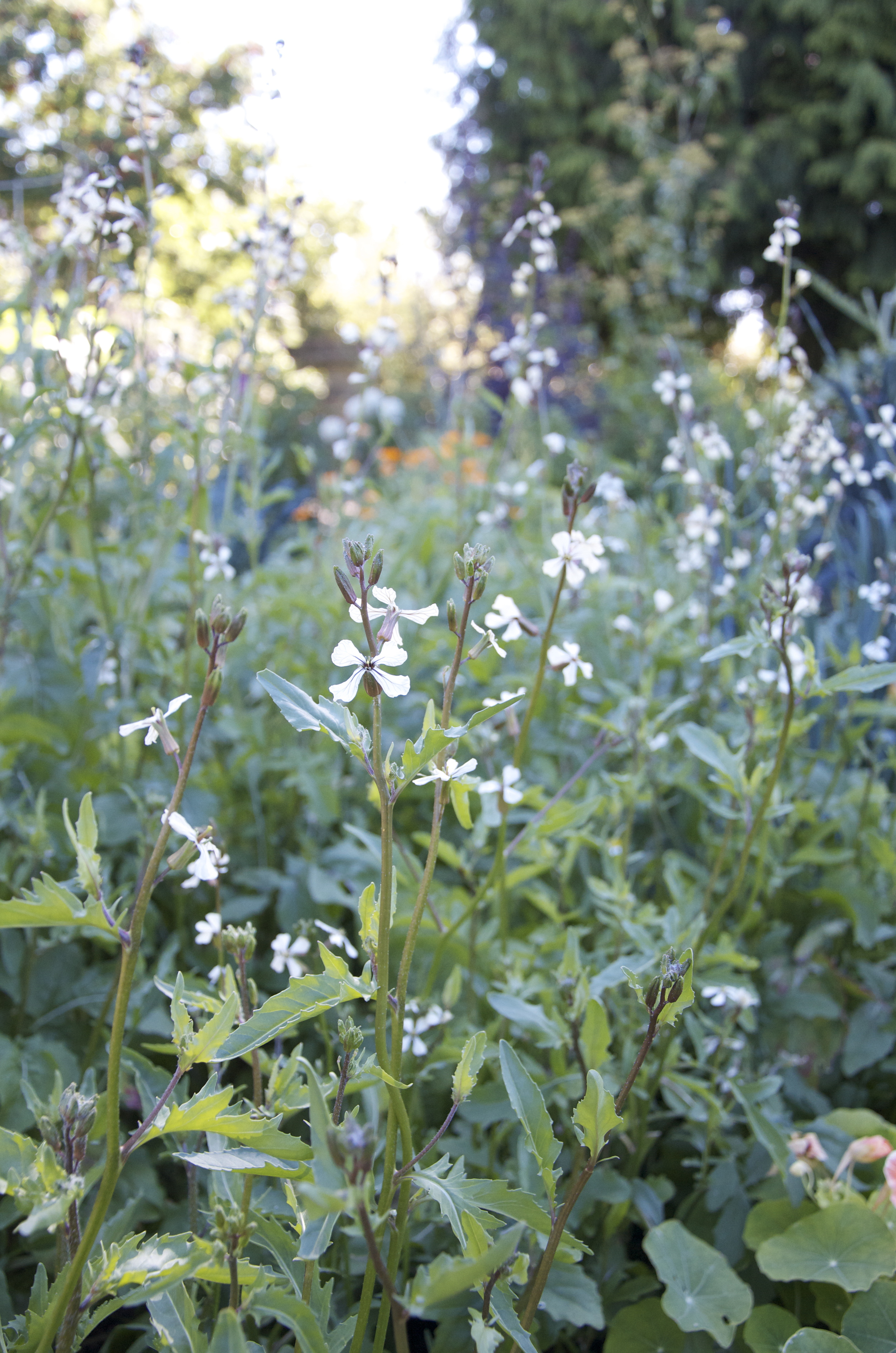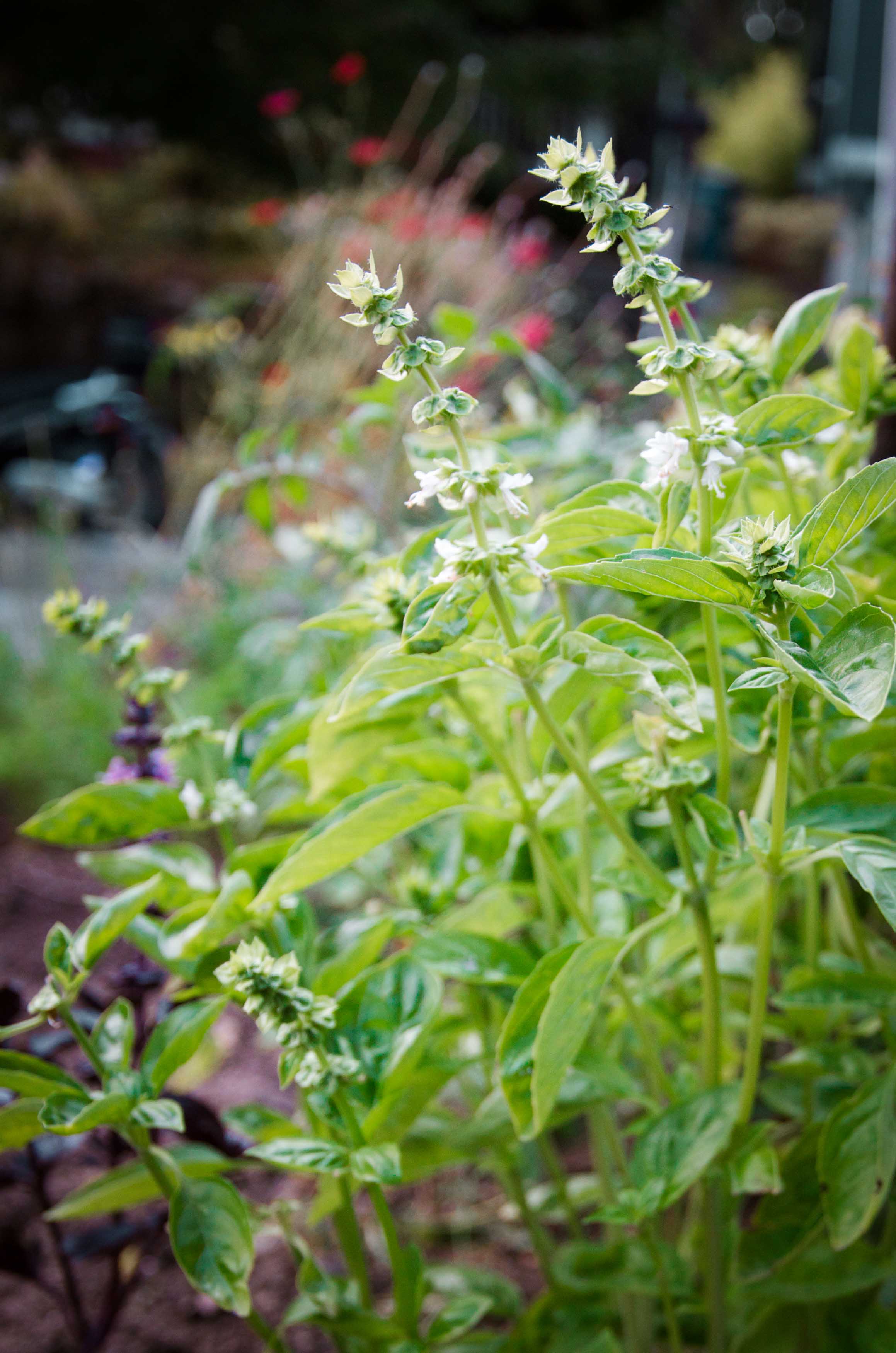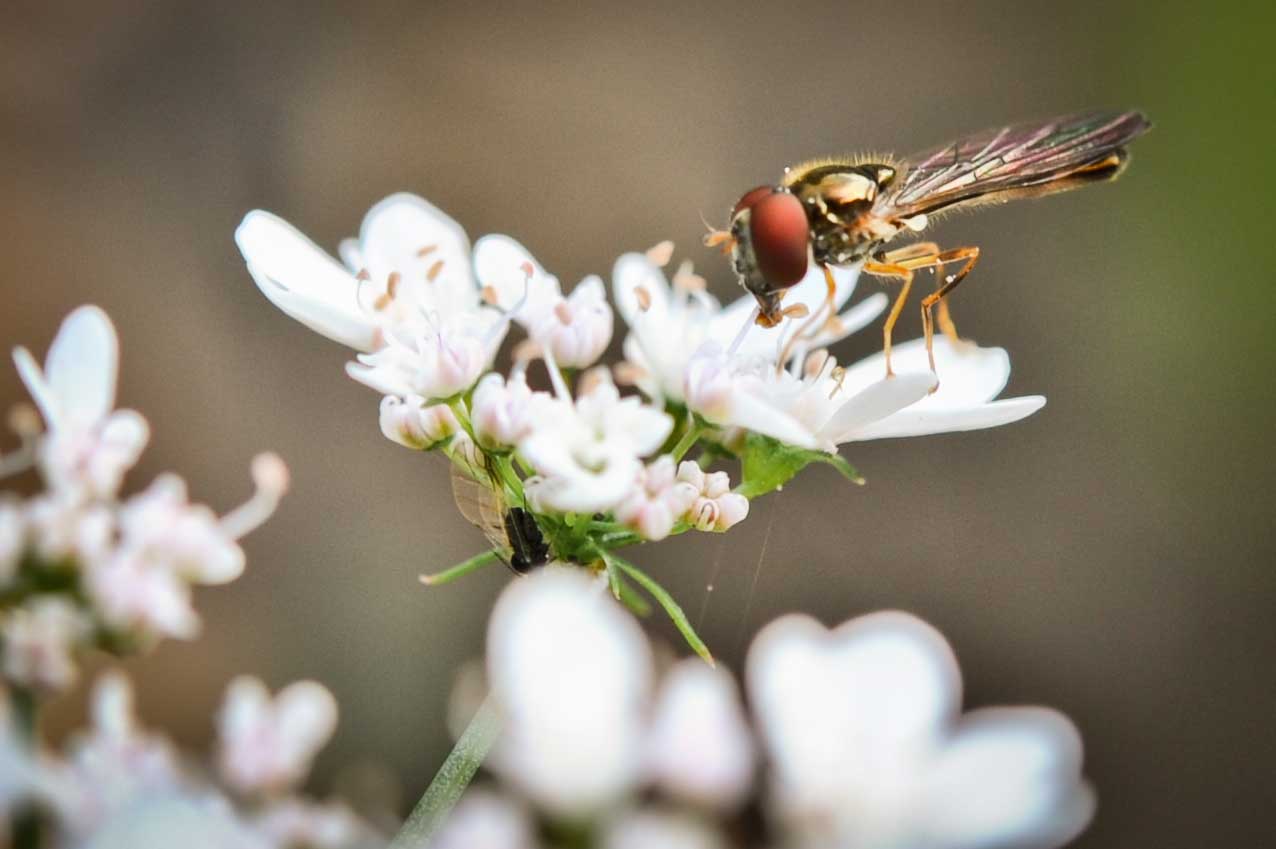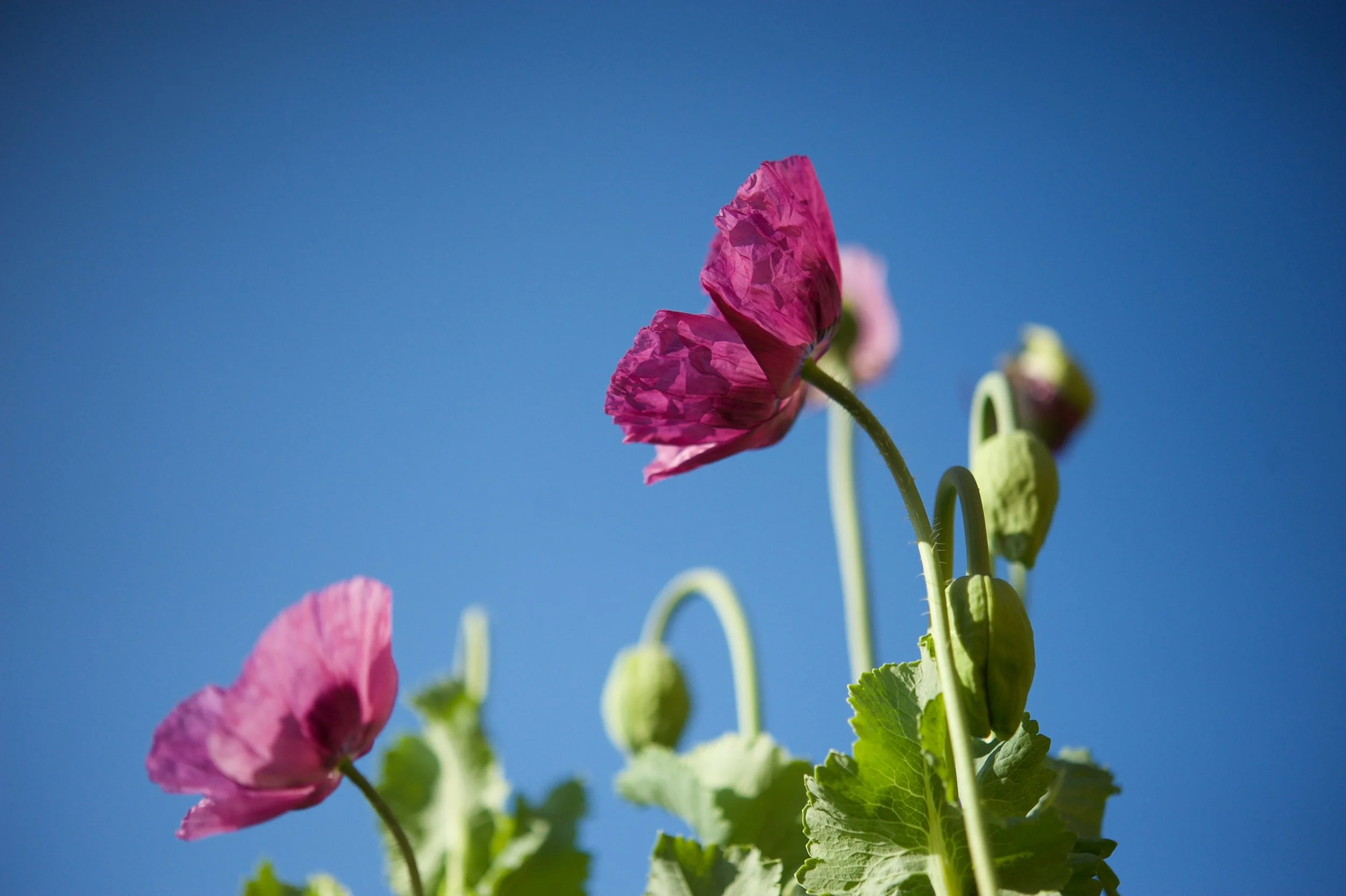Flowers add to any garden by providing beautiful color, shapes, textures, and scents. Besides aesthetic value, flowers can be also be edible, medicinal, and perhaps most importantly, they can be beneficial for the rest of the plants in your garden.
Flowers are particularly beneficial in an edible garden because they attract pollinators, increase biodiversity, and encourage populations of beneficial insects. Insect pollination is essential for many plants to produce healthy fruits and seeds. Without pollination most fruits and vegetables will not set fruit or the fruit will be incomplete. Each species of insects prefers a different set of plants as their source of nutrients, breeding grounds, and habitat. Increased biodiversity of plantings will prevent one insect species from taking over the garden and your population of beneficial insects will prey on insect pests!
Beneficial flowers are both annual and perennial. If you have a smaller garden, or you are going to mix flowers into your vegetable garden beds, we suggest planting annual flowers so that you can easily rotate your planting plan from year to year. If you have the luxury of more space, try planting some of the perennial varieties surrounding your garden or anywhere you can fit them into the landscape. We always suggest, whatever size your garden is, to keep the perennials in a designated area for ease of maintenance and crop rotation. If you are tight on space in your garden, adding containers of annual or perennial flowers is a great option.
It is recommended that you designate 5-10% of your garden for beneficial flowers and that you plant in clusters. For example, if you have one 4x 8’ raised bed, you could plant a single 1’-wide row of flowers along one of the beds’ short ends. This is more effective than planting a single flower here and there all over the garden.
When choosing what flowers to plant, it is important to remember that different flower shapes will attract different insects, so make sure you have variety. If your primary goal is to attract bees: choose plants with blue, purple, and yellow flowers (bees find these colors the most appealing).
Listed below are our favorite easy-to-grow beneficial flowers:
Annuals:
Alyssum (Lobularia maritima): This low-growing, fragrant flower is easy to direct seed and blooms for months with little maintenance. We suggest cutting the plant back by about two-thirds mid-summer or when the plant starts to look “leggy.” This will encourage a second blooming. Numerous studies have confirmed that sweet alyssum is highly attractive to aphid-eating flower flies.
Calendula: This edible flower is attractive to bees and butterflies. It's petals can be tossed in salads or dried for tea and will flower all season if dead-headed regularly. Dead-heading is the act of pulling spent flower blossoms off of a plant before they have time to drop seed.
Calendula is a vigorous self seeder, so if you want to keep it from spreading, dead-head regularly, as we mentioned before. Some gardeners love self seeding/volunteer crops becuase they don’t have to worry about replanting them year after year. If this sounds appealing to you, then let a few heads go to seed a the end of the summer. Once the seed heads have dried out, they’ll drop their seeds and you’ll be set for the following spring. Keep in mind that calendula can spread quickly in your garden, if left unchecked, but its volunteers can also be thinned and transplanted early in the spring, which can help keep your garden from turning into a calendula farm.Cosmos (Cosmos bipinnatus): Cosmos produce lots of yellow pollen and their sturdy stems and ferny leaves provide the perfect scaffolding for spiders to build their webs. They also make great cut flowers. Plant height varies from 2-5’depending on the variety. For example, ‘Antiquity’ grows to about 2’ tall and ‘Sensation’ grows to about 5’. Double-check the height on your seed packet so you don’t end up shading out other plants.
Lobelia (Lobelia erinus): This intensely blue prostrate border plant is attractive to butterflies. We love this plant for its particularly long flowering period, which can extend from mid-spring into the fall. If space is an issue, this is a great option as it makes a beautiful and manageable addition to any hanging basket or container planting.
Love-In-The-Mist (Nigella damascena): This annual has beautiful, delicate blue flowers in early summer, followed by ornamental seed pods. It prefers to be direct seeded and makes great cut flowers.
Scabiosa (Scabiosa atropurpurea): Scabiosa is an incredibly versatile flower. It makes an excellent cut flower, can be used fresh or dried, and is extremely attractive to local pollinator populations. In my observations, I see the most honeybees in my garden resting on scabiosa blossoms, especially late in the summer.
Like any good pollinator-friendly flower, scabiosa has a very long flowering season. In zone 8, it can flower from early-June-October, providing pollinators shelter and forage during times of the of year when other floral resources may be more scarce. I find scabiosa does best when transplanted into the garden.
Saving seed from this flower is easy because each plant produces so many flowers. If you’d like to try saving scabiosa seed, look for seed heads drying on the plant in the late summer or early fall months and snip them off during a dry afternoon.Zinnias: Zinnias provide a place for insects to stop and sun themselves, as well as plenty of pollen and nectar to snack on. We have noticed hummingbirds regularly hanging around the zinnia patch in our garden. We love zinnias for their solid structure and bold colors. They grow quickly from seed and varieties like 'Benary's Giant' make great cut flowers!
Perennials:
Bee Balm (Monardra didyma): Yes! This plant is named after its attractiveness to bees. This colorful perennial also attracts hummingbirds and beneficial insects.
Echinacea (Echinacea spp): The bright blossoms are enjoyed by butterflies and the cones of seeds that remain after the petals drop attract songbirds.
Fennel (Foeniculum vulgare): Long-lasting fennel flowers are extremely attractive to all nectar-feeding beneficial insects, and the feathery green or purple foliage can add a unique texture to your planting plan. The seeds and leaves add an excellent flavor to a variety of dishes. The plants grow about 5’. Perennial fennel spreads vigorously. When planting fennel choose a spot that is contained, or cut the bottom off a large pot and bury the pot around your plant roots to keep the roots from spreading.
Helenium x ‘Moerheim Beauty’: This low maintenance, hardy perennial attracts birds, bees, and butterflies. It grows to about 3’ and blooms for months.
Hyssop (Agastache foeniculum): Hyssop is a bushy herbaceous perennial. Its licorice tasting leaves can be harvested and used for tea. The showy flowers which range from pink to orange, to purple and blue, are rich in nectar and are very attractive to both butterflies and pest-eating beneficial insects.
Annual Herbs + Veggies:
Most of the time we would tell you that one of your main jobs as a vegetable gardener is to prevent your leafy crops from flowering. There are, however, benefits to letting small patch
es of these crops go to bloom! The following is a list of common herbs and vegetables that, if allowed to flower, can provide habitat for beneficial insects and pollinators. You may want to experiment with mixing some of these in with your flowers. The other option is to grow clusters of these crops, harvest some, and then let the rest flower!
Arugula
Dill
Cilantro
Fennel (annual)
Mustard
